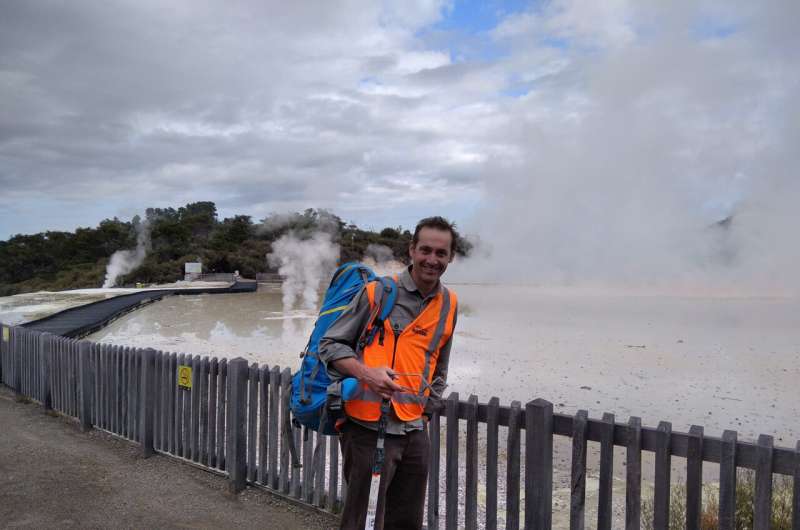This article has been reviewed according to Science X's editorial process and policies. Editors have highlighted the following attributes while ensuring the content's credibility:
fact-checked
peer-reviewed publication
trusted source
proofread
Scientists discover microbe unique to New Zealand

Professor Matthew Stott co-leads a team of researchers from Canterbury and Waikato universities that has identified an endemic genus of geothermal microorganisms—a discovery believed to be a world-first.
Aotearoa New Zealand is a global hotspot for endemism, meaning many of its native plants and animals are found nowhere else in the world. This is because physical barriers like mountains and oceans, or specific climate and food sources, limit species to one geographical region.
However, microorganisms aren't subject to the same restrictions. These tiny hitchhikers can move with water and soils, or ride air currents to new locations.
"Everyone understands the kiwi is endemic to this country because it can't fly or swim to Australia," says Professor Stott. "But for organisms of half a millimeter or smaller, those barriers aren't usually a problem. For bacteria, moving hundreds of kilometers on air currents or via aquifers or water is very common."
For this reason, finding a microorganism that appears to be stranded in NZ is something of a mystery.
The discovery arose from the 1000 Springs Project, which recorded the chemical, physical, and microbial biodiversity of 1,000 North Island hot springs. The project was co-led with Professor Craig Cary from the University of Waikato.
Their research established that a thermophilic (heat-loving) bacterial genus, Venenivibrio, is one of the most abundant species living in hot springs in the Taupō Volcanic Zone. The scientists expected to find it living in other international geothermal locations, but searches of global databases uncovered no record outside New Zealand. A paper outlining the mysteries of Venenivibrio has been published in the journal Nature Communications.
Understanding why this microbe hasn't gone global is the focus of Professor Stott and his team. One potential explanation is that metabolic restrictions may limit Venenivibrio's viability over long distances. Another is that New Zealand's geographical location may prevent it from reaching other hospitable environments.
"Our prevailing weather means microbes are basically being shot out into the Southern Ocean," says Professor Stott. "That means the next major geothermal location is South America. It's not impossible that it could reach there using the volcanic islands of the Pacific as stepping stones, but it's more difficult."
Professor Stott describes microorganisms as "the rulers of the world" for their capacity to impact Earth's ecosystems at all levels. He believes the discovery of an endemic microorganism has important implications for conservation in Aotearoa.
"I think of New Zealand as a really special place for its endemic organisms and beautiful ecosystems. This discovery supports the need for conservation at a microbial level too. It's something Māori know—that these geothermal ecosystems and associated organisms are taonga."
Professor Stott acknowledges the support of Ngāti Tahu—Ngāti Whaoa Rūnanga Trust, mana whenua of the Waiotapu geothermal area near Rotorua, from which the first strain of the microorganism was cultivated.
More information: Jean F. Power et al, A genus in the bacterial phylum Aquificota appears to be endemic to Aotearoa-New Zealand, Nature Communications (2024). DOI: 10.1038/s41467-023-43960-2
Journal information: Nature Communications
Provided by University of Canterbury


















